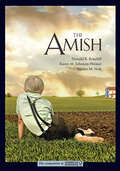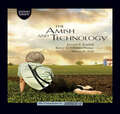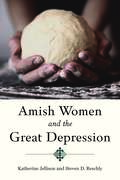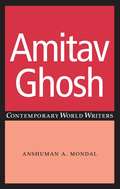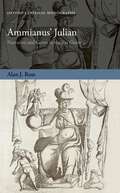- Table View
- List View
Ametora: How Japan Saved American Style
by W. David MarxLook closely at any typically "American" article of clothing these days, and you may be surprised to see a Japanese label inside. From high-end denim to oxford button-downs, Japanese designers have taken the classic American look-known as ametora, or "American traditional"-and turned it into a huge business for companies like Uniqlo, Kamakura Shirts, Evisu, and Kapital. This phenomenon is part of a long dialogue between Japanese and American fashion; in fact, many of the basic items and traditions of the modern American wardrobe are alive and well today thanks to the stewardship of Japanese consumers and fashion cognoscenti, who ritualized and preserved these American styles during periods when they were out of vogue in their native land.In Ametora, cultural historian W. David Marx traces the Japanese assimilation of American fashion over the past hundred and fifty years, showing how Japanese trendsetters and entrepreneurs mimicked, adapted, imported, and ultimately perfected American style, dramatically reshaping not only Japan's culture but also our own in the process.
Ametora: How Japan Saved American Style
by W. David MarxThe story of how Japan adopted and ultimately revived traditional American fashion Look closely at any typically "American" article of clothing these days, and you may be surprised to see a Japanese label inside. From high-end denim to oxford button-downs, Japanese designers have taken the classic American look—known as ametora, or "American traditional"—and turned it into a huge business for companies like Uniqlo, Kamakura Shirts, Evisu, and Kapital. This phenomenon is part of a long dialogue between Japanese and American fashion; in fact, many of the basic items and traditions of the modern American wardrobe are alive and well today thanks to the stewardship of Japanese consumers and fashion cognoscenti, who ritualized and preserved these American styles during periods when they were out of vogue in their native land. In Ametora, cultural historian W. David Marx traces the Japanese assimilation of American fashion over the past hundred and fifty years, showing how Japanese trendsetters and entrepreneurs mimicked, adapted, imported, and ultimately perfected American style, dramatically reshaping not only Japan's culture but also our own in the process.
Amherst in the World
by Martha SaxtonIn celebration of the 200th anniversary of Amherst College, a group of scholars and alumni explore the school’s substantial past in this volume. Amherst in the World tells the story of how an institution that was founded to train Protestant ministers began educating new generations of industrialists, bankers, and political leaders with the decline in missionary ambitions after the Civil War. The contributors trace how what was a largely white school throughout the interwar years begins diversifying its student demographics after World War II and the War in Vietnam. The histories told here illuminate how Amherst has contended with slavery, wars, religion, coeducation, science, curriculum, town and gown relations, governance, and funding during its two centuries of existence. Through Amherst’s engagement with educational improvement in light of these historical undulations, it continually affirms both the vitality and the utility of a liberal arts education.
Amicable Agreement Versus Majority Rule: Conflict Resolution in Switzerland
by Jürg SteinerWhen the German edition of Steiner's masterful analysis of Switzerland's political system was first published in 1970 as Gewaltlose Politik und kulturelle Vielfalt, it was greeted by the American Political Science Review as a laudable departure from conventional comparative series." This new edition, extensively revised and expanded, makes Steiner's innovative study available to political theorists in the English-speaking world."Originally published 1974.A UNC Press Enduring Edition -- UNC Press Enduring Editions use the latest in digital technology to make available again books from our distinguished backlist that were previously out of print. These editions are published unaltered from the original, and are presented in affordable paperback formats, bringing readers both historical and cultural value.
Amico: The Life of Giovanni Battista Viotti
by Warwick ListerThis is the first full-length biography in English of Giovanni Battista Viotti (1755-1824), one of the great violinist-composers in the history of music, and arguably the most influential violinist who ever lived. This study is based on extensive documentary research, much of it here revealed for the first time.
Amiens 1918: The Last Great Battle
by James McWilliams R James SteelOn 8 August 1918, the Allied forces launched the surprise attack that heralded the end of the First World War. With skill and daring, 21 divisions of men breached the German lines, supported by 500 tanks and 1,000 aircraft. This book considers the successes and failures of both sides in this conflict.
Amiens and Munich: Comparisons in Appeasement
by E.L. PresseisenIt has not been my intention to write a definitive study of appeasement. Such a work would have to include the French variety, Stalin's appeasement of Hitler between 1939 and 1941, or the appeasement of Japan in 1938 and 1939. I chose the British case for a number of reasons. The opportunity of a comparative model was a challenge, British appeasement was well known, and the structure of the British government remained rather the same in the intervening period between Waterloo and Dunkirk. I admit that Amiens and Munich represent the most dramatic episodes in the story of appeasement, but then the British struggles against Bonaparte and Hitler were of epic proportions. It was of course unnecessary "to prove" appeasement at Munich, but very few historians had looked at the treaty of Amiens in this way. Much of my research effort was therefore devoted to examining the published material of the earlier period. While I have used some original Addington documents, this work is not primarily an inquiry into unpublished sources but a rein terpretation of well known events that were made public long ago. The flood of publications and revelations of the 1930's continues unabated. I have tried to use the latest studies, especially those that have benefited from the thirty year rule. My debts of gratitude extend over a long period since two stints as chairman of the department have delayed this book by at least four years.
Amir Sjarifoeddin: Politics and Truth in Indonesia, 1907-1948 (Cornell Modern Indonesia Project)
by Rudolf MrázekAmir Sjarifoeddin explores the experiences of a central figure in the Indonesian revolution, whose life mirrored the idealism and contradictions of the anti-colonial and post-war world of twentieth century Indonesia. Amir was born at the edge of an empire in a time of change. Imprisoned by the Dutch for anti-colonialism, he was sentenced to death by the Japanese for anti-fascism. He survived to become the prime minister of the new Indonesian republic. Disappointed by the direction the Indonesian elites were taking, Amir turned increasingly to the left. In 1948 he joined the armed uprising against both the Indonesian government and the corruption of the national revolution, and was captured and executed as a traitor. In Amir Sjarifoeddin, Rudolf Mrázek unveils the human dimensions of a figure who is widely mythologized but often poorly understood. Through Sjarifoeddin's life, it is possible to study the moral ambiguity and complexities of the political revolutions of the twentieth century.
Amiri Baraka and the Congress of African People: History and Memory (Contemporary Black History)
by M. SimangaThis important look at CAP combines historical research and analysis with the author's first-hand experience with the organization, providing the first historical narrative of a consequential player in the Black Power Movement.
The Amish
by Steven M. Nolt Donald B. Kraybill Karen M. Johnson-WeinerThe Amish have always struggled with the modern world. Known for their simple clothing, plain lifestyle, and horse-and-buggy mode of transportation, Amish communities continually face outside pressures to modify their cultural patterns, social organization, and religious world view. An intimate portrait of Amish life, The Amish explores not only the emerging diversity and evolving identities within this distinctive American ethnic community, but also its transformation and geographic expansion.Donald B. Kraybill, Karen M. Johnson-Weiner, and Steven M. Nolt spent twenty-five years researching Amish history, religion, and culture. Drawing on archival material, direct observations, and oral history, the authors provide an authoritative and sensitive understanding of Amish society. Amish people do not evangelize, yet their numbers in North America have grown from a small community of some 6,000 people in the early 1900s to a thriving population of more than 320,000 today. The largest populations are found in Ohio, Pennsylvania, and Indiana, with additional communities in twenty-eight other states and three Canadian provinces. The authors argue that the intensely private and insular Amish have devised creative ways to negotiate with modernity that have enabled them to thrive in America. The transformation of the Amish in the American imagination from "backward bumpkins" to media icons poses provocative questions. What does the Amish story reveal about the American character, popular culture, and mainstream values? Richly illustrated, The Amish is the definitive portrayal of the Amish in America in the twenty-first century.
The Amish and Technology: An Excerpt from <I>The Amish</I>
by Steven M. Nolt Donald B. Kraybill Karen M. Johnson-WeinerLimits on technology are the signature mark of twenty-first century Amish identity. Riding in horse-drawn buggies and living unplugged from the public grid unmistakably separate Amish people from mainstream Americans. Yet the Amish do not categorically condemn technology. Nor are they technologically naïve. Rather, Amish communities selectively sort out what might help or harm them. More significantly, the Amish modify and adapt technology in creative ways to fit their cultural values and social goals. Amish technologies are diverse, complicated, and ever-changing. This digital short explores the complicated relationship between the Amish and technology today.
Amish Grace: How Forgiveness Transcended Tragedy
by Donald B. Kraybill Steven M. Nolt David L. Weaver-ZercherOn Monday morning, October 2, 2006, a gunman entered a one-room Amish school in Nickel Mines, Pennsylvania. In front of twenty-five horrified pupils, thirty-two-year-old Charles Roberts ordered the boys and the teacher to leave. After tying the legs of the ten remaining girls, Roberts prepared to shoot them execution with an automatic rifle and four hundred rounds of ammunition that he brought for the task. The oldest hostage, a thirteen-year-old, begged Roberts to "shoot me first and let the little ones go." Refusing her offer, he opened fire on all of them, killing five and leaving the others critically wounded. He then shot himself as police stormed the building. His motivation? "I'm angry at God for taking my little daughter," he told the children before the massacre. The story captured the attention of broadcast and print media in the United States and around the world. By Tuesday morning some fifty television crews had clogged the small village of Nickel Mines, staying for five days until the killer and the killed were buried. The blood was barely dry on the schoolhouse floor when Amish parents brought words of forgiveness to the family of the one who had slain their children. The outside world was incredulous that such forgiveness could be offered so quickly for such a heinous crime. Of the hundreds of media queries that the authors received about the shooting, questions about forgiveness rose to the top. Forgiveness, in fact, eclipsed the tragic story, trumping the violence and arresting the world's attention. Within a week of the murders, Amish forgiveness was a central theme in more than 2,400 news stories around the world. The Washington Post, The New York Times, USA Today, Newsweek, NBC Nightly News, CBS Morning News, Larry King Live, Fox News, Oprah, and dozens of other media outlets heralded the forgiving Amish. From the Khaleej Times (United Arab Emirates) to Australian television, international media were opining on Amish forgiveness. Three weeks after the shooting, "Amish forgiveness" had appeared in 2,900 news stories worldwide and on 534,000 web sites. Fresh from the funerals where they had buried their own children, grieving Amish families accounted for half of the seventy-five people who attended the killer's burial. Roberts' widow was deeply moved by their presence as Amish families greeted her and her three children. The forgiveness went beyond talk and graveside presence: the Amish also supported a fund for the shooter's family. AMISH GRACE explores the many questions this story raises about the religious beliefs and habits that led the Amish to forgive so quickly. It looks at the ties between forgiveness and membership in a cloistered communal society and ask if Amish practices parallel or diverge from other religious and secular notions of forgiveness. It will also address the matter of why forgiveness became news. "All the religions teach it," mused an observer, "but no one does it like the Amish." Regardless of the cultural seedbed that nourished this story, the surprising act of Amish forgiveness begs for a deeper exploration. How could the Amish do this? What did this act mean to them? And how might their witness prove useful to the rest of us?
The Amish Nanny's Sweetheart: An Unexpected Amish Romance The Amish Nanny's Sweetheart (Amish Country Brides #2)
by Jan DrexlerLove in Plain Sight
Amish Women And The Great Depression (Young Center Books In Anabaptist And Pietist Studies)
by Katherine Jellison Steven D. ReschlyAmish Women and the Great Depression (Young Center Books In Anabaptist And Pietist Studies)
by Katherine Jellison and Steven D. ReschlyAmistad's Orphans: An Atlantic Story of Children, Slavery, and Smuggling
by Benjamin Nicholas LawranceThe lives of six African children, ages nine to sixteen, were forever altered by the revolt aboard the Cuban schooner La Amistad in 1839. Like their adult companions, all were captured in Africa and illegally sold as slaves. In this fascinating revisionist history, Benjamin N. Lawrance reconstructs six entwined stories and brings them to the forefront of the Amistad conflict. Through eyewitness testimonies, court records, and the children’s own letters, Lawrance recounts how their lives were inextricably interwoven by the historic drama, and casts new light on illegal nineteenth-century transatlantic slave smuggling.
Amitabh Bachchan (Film Stars)
by Sunny SinghIn this unique study of the star, Sunny Singh examines Amitabh Bachchan's film performances and his star persona, locating them in the context of cultural phenomena and global branding, and explores the reasons behind the longevity of his stardom. This illuminating analysis assesses the full range of Bachchan's work, personality and influence - political, social, economic and technological. With in-depth analyses of key films and their wide-ranging social contexts, Singh offers a provocative and in-depth study of the superstar, his extensive career to date as well as the nature of Indian, Asian, and global stardom. An ideal resource for undergraduate and postgraduate students of film and television studies, this fascinating guide will also appeal to film lovers and anyone interested in this famed actor's transnational career.
Amitav Ghosh (Contemporary World Writers)
by Anshuman A. MondalAmitav Ghosh is an authoritative critical introduction to the fictional and non-fictional writings of one of the most celebrated and significant literary voices to have emerged from India in recent decades. It is the first full-length study of Amitav Ghosh's work to be available outside India. Encompassing all of Ghosh's fictional and non-fictional writings to date, this book takes a thematic approach which enables in-depth analysis of the cluster of themes, ideas and issues that Ghosh has steadily built up into a substantial intellectual project. This project overlaps significantly with many of the key debates in postcolonial studies making this book both an introduction to Ghosh's writing and a contribution to the development of ideas on the 'postcolonial', in particular, its relation to postmodernism. Aimed at students and the general reader, this book is an ideal introduction to one of contemporary literature's most fascinating writers.
Amitav Ghosh (Contemporary World Writers)
by Anshuman A. MondalAmitav Ghosh is an authoritative critical introduction to the fictional and non-fictional writings of one of the most celebrated and significant literary voices to have emerged from India in recent decades. It is the first full-length study of Amitav Ghosh's work to be available outside India. Encompassing all of Ghosh's fictional and non-fictional writings to date, this book takes a thematic approach which enables in-depth analysis of the cluster of themes, ideas and issues that Ghosh has steadily built up into a substantial intellectual project. This project overlaps significantly with many of the key debates in postcolonial studies making this book both an introduction to Ghosh's writing and a contribution to the development of ideas on the 'postcolonial', in particular, its relation to postmodernism. Aimed at students and the general reader, this book is an ideal introduction to one of contemporary literature's most fascinating writers.
Ammianus' Julian: Narrative and Genre in the Res Gestae (Oxford Classical Monographs)
by Alan J. RossAmmianus Marcellinus' Res Gestae holds a prominent position in modern studies of the emperor Julian as the fullest extant narrative of the reign of the last 'pagan' emperor. Ammianus' Julian: Narrative and Genre in the Res Gestae offers a major reinterpretation of the work, which is one of the main narrative sources for the political history of the later Roman Empire, and argues for a re-examination of Ammianus' agenda and methods in narrating the reign of Julian. Building on recent developments in the application of literary approaches and critical theories to historical texts, Ammianus' presentation of Julian is evaluated by considering the Res Gestae within three interrelated contexts: as a work of Latin historiography, which consciously sets itself within a classical and classicizing generic tradition; in a more immediate literary and political context, as the final contribution by a member of an 'eyewitness' generation to a quarter century of intense debate over Julian's legacy by several authors who had lived through his reign and had been in varying degrees of proximity to Julian himself; and as a narrative text, in which narratorial authority is closely associated with the persona of the narrator, both as an external narrating agent and an occasional participant in the events he relates. This is complemented by a literary survey and a re-analysis of Ammianus' depiction of several key moments in Julian's reign, such as his appointment as Caesar, the battle of Strasbourg in 357AD, his acclamation as Augustus, and the disastrous invasion of Persia in 363AD. It suggests that the Res Gestae presents a Latin-speaking, western audience with an idiosyncratic and 'Romanized' depiction of the philhellene emperor and that, consciously exploiting his position as a Greek writing in Latin and as a contemporary of Julian, Ammianus wished his work to be considered a culminating and definitive account of the man and his life.
Ammianus' Julian: Narrative and Genre in the Res Gestae (Oxford Classical Monographs)
by Alan J. RossAmmianus Marcellinus' Res Gestae holds a prominent position in modern studies of the emperor Julian as the fullest extant narrative of the reign of the last 'pagan' emperor. Ammianus' Julian: Narrative and Genre in the Res Gestae offers a major reinterpretation of the work, which is one of the main narrative sources for the political history of the later Roman Empire, and argues for a re-examination of Ammianus' agenda and methods in narrating the reign of Julian. Building on recent developments in the application of literary approaches and critical theories to historical texts, Ammianus' presentation of Julian is evaluated by considering the Res Gestae within three interrelated contexts: as a work of Latin historiography, which consciously sets itself within a classical and classicizing generic tradition; in a more immediate literary and political context, as the final contribution by a member of an 'eyewitness' generation to a quarter century of intense debate over Julian's legacy by several authors who had lived through his reign and had been in varying degrees of proximity to Julian himself; and as a narrative text, in which narratorial authority is closely associated with the persona of the narrator, both as an external narrating agent and an occasional participant in the events he relates. This is complemented by a literary survey and a re-analysis of Ammianus' depiction of several key moments in Julian's reign, such as his appointment as Caesar, the battle of Strasbourg in 357AD, his acclamation as Augustus, and the disastrous invasion of Persia in 363AD. It suggests that the Res Gestae presents a Latin-speaking, western audience with an idiosyncratic and 'Romanized' depiction of the philhellene emperor and that, consciously exploiting his position as a Greek writing in Latin and as a contemporary of Julian, Ammianus wished his work to be considered a culminating and definitive account of the man and his life.
Ammonius: Ammonius: On Aristotle On Interpretation 1-8 (Ancient Commentators on Aristotle)
by David L. BlankAristotle's On Interpretation, the centrepiece of his logic, examines the relationship between conflicting pairs of statements. The first eight chapters, analysed in this volume, explain what statements are, starting from their basic components - the words - and working up to the character of opposed affirmations and negations. Ammonius, who in his capacity as Professor at Alexandria from around AD 470 taught almost all the great sixth-century commentators, left just this one commentary in his own name, although his lectures on other works of Aristotle have been written up by his pupils, who included Philoponus and Asclepius. His ideas on Aristotle's On Interpretation were derived from his own teacher, Proclus, and partly from the great lost commentary of Porphyry. The two most important extant commentaries on On Interpretation, of which this is one (the other being by Boethius) both draw on Porphyry's work, which can be to some extent reconstructed for them
Ammonius: On Aristotle On Interpretation 9 (Ancient Commentators on Aristotle)
by David L. Blank Norman KretzmannThis book is about determinisism. It contains the two most important commentaries on the determinists' sea battle argument, and on other deterministic arguments besides. It includes the earliest full exposition of the Reaper argument for determinism, and a discussion of whether there can be changeless knowledge of the passage of time. It also contains the two fullest expositions of the idea that it is not truth, but only definite truth, that would imply determinism.Ammonius and Boethius both wrote commentaries on Aristotle's On Interpretation and on its ninth chapter, where Aristotle discusses the sea battle. Their comments are crucial, for Ammonius' commentary influenced the Islamic the Islamic Middle Ages, while that of Boethius was of equal importance to medieval Latin-speaking philosophers. It was once argued that Boethius was influenced by Ammonius, but these translations are published together in this volume to enable the reader to see clearly that this was not the case. Ammonius draws on the fourth- and fifth-century Neoplatonists lamblichus, Syrianus, and Proclus. He arranges his argument around three major deterministic arguments and is our main source for one of them, the Reaper argument, which has hitherto received insufficient attention. Boethius, on the other hand, draws on controversies from 300 years earlier between Stoics and Aristotelians as recorded by Alexander of Aphrodisias and Porphyry. This volume is essential reading for all those with an interest in the history of determinism. Ammonius' commentary on the first eight chapters of Aristotle's On Interpretation has appeared in a previously published volume in this series, translated by David Blank.
Ammonius: On Aristotle Categories (Ancient Commentators on Aristotle)
by S. Marc Cohen Gareth B. MatthewsAmmonius, who taught most of the leading sixth-century Neoplatonists, introduced the methods of his own teacher, Proclus, from Athens to Alexandria. These are exemplified in his commentaries: for instance, in the set of ten introductory questions prefixed to this commentary, which became standard. The commentary is interesting for the light it sheds on the religious situation in Alexandria. It used to be said that the Alexandrian Neoplatonist school was allowed to remain open after the Athenian school closed because Ammonius has agreed with the Christian authorities to keep quiet about his religious views. On the contrary, as this commentary shows he freely declared his belief in the Neoplatonist deities. The philosophical problems considered by Ammonius offer a unique insight into Aristotle's Categories. They exercise the mind and deepen understanding of the subject matter. Modern readers would do well to put the same questions to themselves.








